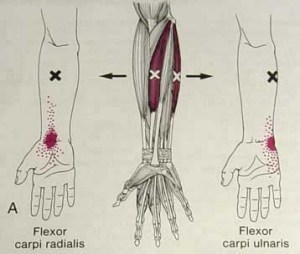
carpi ulnaris tendon
As a surgeon at the Munson Orthopedic Clinic in Fort Leavenworth, Kansas, Dr. Aaron Tragos has treated the musculoskeletal and joint injuries of thousands of soldiers and their families based there. Over the course of his career, Dr. Aaron Tragos has performed numerous hand surgeries.
The human hand is a complex structure. Networks of nerves and soft tissues surround a basic framework of 27 bones, eight of which make up the wrist. Seven of these carpal (wrist) bones play a role in wrist movement, while the eighth serves as a stable base and a channel for passage of the carpi ulnaris tendon.
The remaining 19 bones of the hand are categorized as metacarpals and phalanges. The metacarpals, which make up the palm, fit together at the base with the carpal bones. The first metacarpal, or thumb, interacts solely with the trapezium of the wrist, while the remaining four interact with the distal, or outward-facing, wrist bones, known as the trapezoid, capitate, and hamate.
The metacarpals interface in turn with the proximal, or closest, phalanges of the fingers. Each finger also contains a middle and outer phalanx, while the thumb has only two phalanges and is thus significantly shorter. This results in a total of 14 phalanges in the normal human hand.
You must be logged in to post a comment.